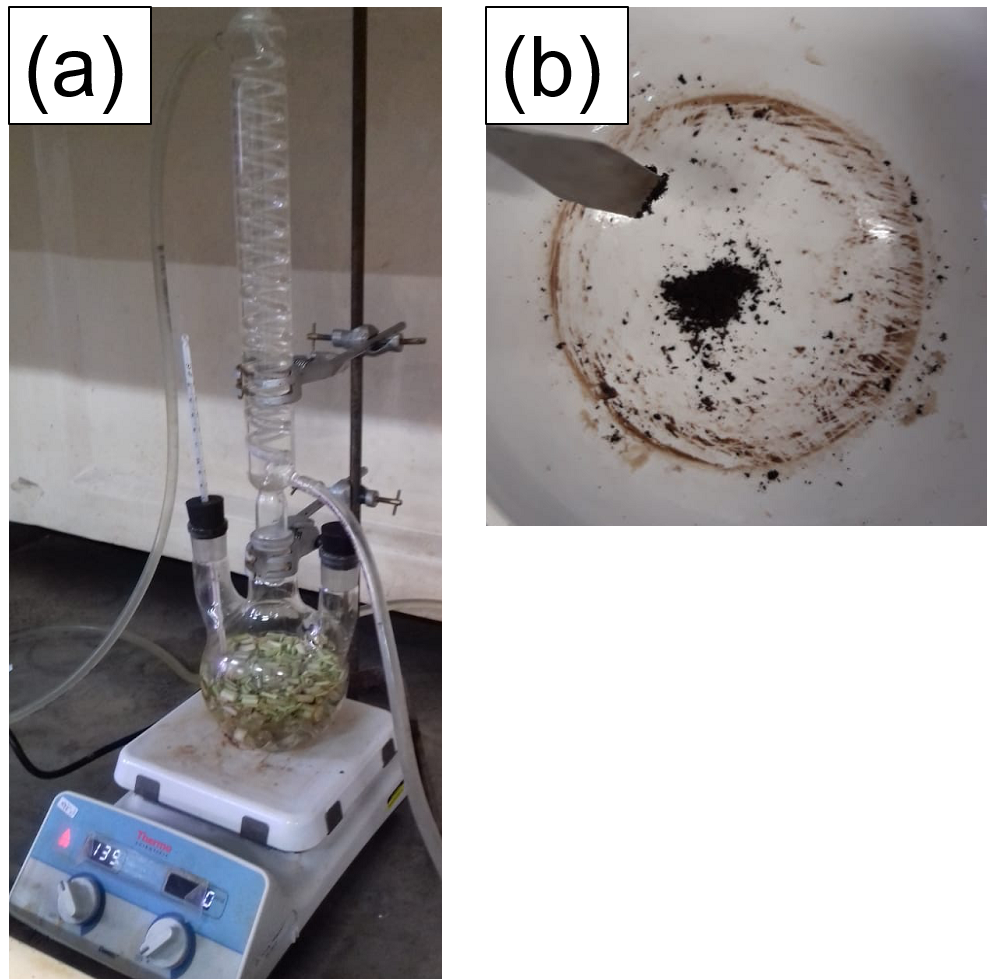The usage of nanoparticles as an alternative antimicrobial agent has been attracting attentions because of its advantages compared to conventional antimicrobial. The mechanism of nanoparticle antimicrobial activity is complex, thus complicating development of microbial-resistance nanoparticles. Nanoparticles that have excellent antimicrobial activity are usually metal- or metal oxide-based nanoparticles, such as silver nanoparticles, copper or copper oxide, and zinc oxide. In general, there are two methods to synthesize such nanoparticles, namely, top down and bottom up methods. Bottom up method, which can be divided into two, namely, chemical synthesis and green synthesis, is preferred because the obtained nanoparticles are quite uniform and the process is easier to control. Chemical synthesis method uses chemicals that could be corrosive, flammable or hazardous as reducing and capping agents (materials that prevent excessive growth of nanoparticles and prevent nanoparticle aggregation ). In addition to having expensive price, these chemicals are also limited in availability and could have some negative impacts to environment. Therefore, green synthesis method has thrived in recent years because of several advantages.
Green synthesis process utilizes extracts from leaves, seeds, buds, and fruit as reducing agents that could replace harsh chemical such as potassium borrohydrate that is commonly used in chemical synthesis. The resultant nanoparticles from green synthesis are generally smaller and more uniform, thus exhibiting higher antimicrobial activity. Utilization of plant extracts is preferred as well because the ingredients are cheaper, renewable, non-toxic and environmentally friendly. Plant extracts could also act as capping agents at the same time, negating needs for additional materials in synthesis process. The use of plant extracts that have antimicrobial properties also has a potential to improve antimicrobial properties of metal nanoparticles synthesized by this method. In this research, zinc oxide nanoparticles is synthesized by using lemongrass extract as reducing and capping agent.
Lemongrass stalks were washed and cut to enhance the surface area. The mixture of lemongrass and water was refluxed. An aliquot was collected over constant period of time and the absorbance of each sample was measured. Optimum extract was filtered and subsequently used for nanoparticle synthesis. In nanoparticle synthesis, Zn(NO3)2.4H2O solution was used as Zn precursor. The solution was combined with lemongrass extract at specific volume ratio and allowed to react at specific temperature for specific duration. The resultant precipitate was centrifuged and dried in the oven. The obtained nanoparticles were characterized by different methods, namely, UV-Vis spectroscopy, XRD, DLS, and FTIR. Antimicrobial and antibiofilm activities of the nanoparticles were assessed against Escherichia coli.

Contact Person:
Vita Wonoputri, Ph.D. (vita@che.itb.ac.id)
